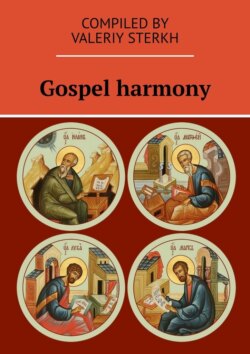Читать книгу Gospel harmony - Valeriy Sterkh - Страница 7
Part 1. Stating the facts
The Gospel of John
ОглавлениеThe Gospel of John was written by the end of the 1st century. Tradition holds that it was compiled by John the Theologian, the son of Zebedee (see Mt 10:2; Mk 3:17; Lk 6:14; Jn 21:2, 24).
«Then, John, the disciple of Jesus who lay on His bosom [Jn 13:23], also published his Gospel during his time in Ephesus in Asia» (Irenaeus of Lyons. Against Heresies, 3.1.1; compare Eusebius of Caesarea. Church History, 5.8).
«John, the apostle, the one especially loved by Jesus [Jn 21:20, 24], the son of Zebedee and the brother of Jacob who was beheaded by Herod after the sufferings of the Lord, last of all wrote his Gospel at the request of some bishops in Asia who contended against Cerinthus and other heretics, especially the teachings of Ebionites who taught that Christ didn’t exist before Mary. So, John was asked to speak in defense of the doctrine of Divine Birth. There was yet another reason: having read the works of Matthew, Mark, and Luke, John approved of their narratives and confirmed that they contained the truth, noting that these narratives only describe was happened during the one year after John [the Baptist] was put in prison and executed. So, he himself wrote about a period preceding John’s imprisonment, and it can be a revelation for those who diligently read the works of the Gospel-writers. In addition, this consideration removes the contradictions that seemed to exist between the text of John and others… On the fourteenth year after Nero [82 NE] Domitian began the second persecution against Christians. John was exiled to the island of Patmos and wrote there the Apocalypse, which was later commented on by Justin Martyr and Irenaeus. But after Domitian’s death [96 NE] and the abolition of his cruel decrees, John returned to the city of Ephesus and, remaining there until the arrival of the emperor Trajan, contributed in every way to the planting of churches throughout Asia. Died of old age in the 68th year after the Passion of the Lord and was buried near Ephesus» (Jerome of Stridon. On Famous Men, 7; compare Eusebius of Caesarea. Church History, 3.24.7—14).
The Gospel of John was written to emphasize the divinity of Jesus Christ and to supplement what was lacking in the Gospels of Matthew, Mark, and Luke. John calls himself a «disciple whom Jesus loved» (Jn 13:23; 19:26; 20:2; 21:7, 20). He belonged to the small circle of apostles whom Jesus had singled out to be with him more often. John also includes several episodes not found in the other Gospels.
